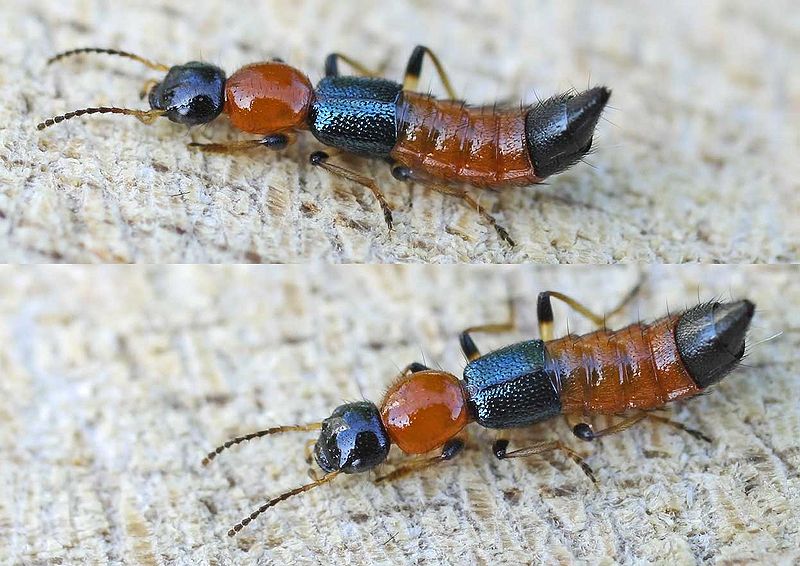Wild-caught insects and other invertebrates are valuable, and often essential, additions to the diets of many captive reptiles and amphibians. During the warmer months, I have utilized them for 50-100% of the diets of many animals in my own collection, and for those under my care in zoos.
Beating the Bushes for Insects
 One of the simplest and most effective collecting techniques was developed by entomologists (insect scientists) who needed to sample large habitats quickly. Here it is: a white, un-patterned sheet is spread below a bush or tree, and the foliage is then beaten with a stick. That’s it!
One of the simplest and most effective collecting techniques was developed by entomologists (insect scientists) who needed to sample large habitats quickly. Here it is: a white, un-patterned sheet is spread below a bush or tree, and the foliage is then beaten with a stick. That’s it!
An incredible assortment of caterpillars, beetles, ants, tree crickets, katydids, spiders and other tasty morsels will rain down upon the sheet, where they can be easily collected. The majority will be arboreal species – healthful additions to the diets of tree frogs, flying geckos, smooth green snakes and other tree-dwelling creatures, and to all other insectivorous herps.
Identifying Potentially Troublesome Species
 Do not collect fireflies, “hairy” caterpillars (please see photo), and brightly colored insects that you cannot identify (due to possible toxicity). Unless you are well-acquainted with local spiders, it is best to avoid them as well…harvestmen, or “daddy long-legs”, however, are harmless.
Do not collect fireflies, “hairy” caterpillars (please see photo), and brightly colored insects that you cannot identify (due to possible toxicity). Unless you are well-acquainted with local spiders, it is best to avoid them as well…harvestmen, or “daddy long-legs”, however, are harmless.
Use our plastic tongs to handle any specimens that may bite or sting. A Peterson or Audubon Society field guide will help you to learn about the innumerable interesting creatures that you will encounter.
A World of Possibilities
You’ll have quite a selection to choose from, wherever you live. Over 2,000 types of insects live right within New York City, and it is estimated that 30 million species inhabit the planet. A single tree in Panama has yielded 130 species of beetle, 100 of which were new to science!
Last summer I was pleasantly surprised to find the spectacular eyed click beetle (Alaus oculatus) pictured below in my haul (this fellow was released).
Insect Traps and Canned Insects
The Zoo Med Bug Napper is another very useful insect-collecting tool. An alternative means of introducing variety to your pets’ diets is through the use of canned invertebrates.
Further Reading
An amusing story involving the “bush beating” technique is given in fabulous book To the Zoo in a Plastic Box (Newmark, 1965; Random House). A hilarious and informative account of two brothers’ adventures collecting insects and herps for the London Zoo, the book is a true gem…please read it if possible.
Please see my other insect-collecting articles as well – Leaf Litter Invertebrates and Building a Termite Trap.
 The world’s 250,000+ fly species figure importantly in the diets of a wide range of smaller creatures…this makes sense, as approximately 1 in every 10 animal species is a fly!
The world’s 250,000+ fly species figure importantly in the diets of a wide range of smaller creatures…this makes sense, as approximately 1 in every 10 animal species is a fly!  That Reptile Blog – Reptile, Amphibian and Exotic Pet Care and Information
That Reptile Blog – Reptile, Amphibian and Exotic Pet Care and Information

 To create a pitfall trap, simple bury a can or jar flush with the ground and cover it with a board that is slightly elevated by small stones. This will keep rain out while allowing invertebrates to enter.
To create a pitfall trap, simple bury a can or jar flush with the ground and cover it with a board that is slightly elevated by small stones. This will keep rain out while allowing invertebrates to enter. One of the simplest and most effective collecting techniques was developed by entomologists (insect scientists) who needed to sample large habitats quickly. Here it is: a white, un-patterned sheet is spread below a bush or tree, and the foliage is then beaten with a stick. That’s it!
One of the simplest and most effective collecting techniques was developed by entomologists (insect scientists) who needed to sample large habitats quickly. Here it is: a white, un-patterned sheet is spread below a bush or tree, and the foliage is then beaten with a stick. That’s it! Do not collect fireflies, “hairy” caterpillars (please see photo), and brightly colored insects that you cannot identify (due to possible toxicity). Unless you are well-acquainted with local spiders, it is best to avoid them as well…harvestmen, or “daddy long-legs”, however, are harmless.
Do not collect fireflies, “hairy” caterpillars (please see photo), and brightly colored insects that you cannot identify (due to possible toxicity). Unless you are well-acquainted with local spiders, it is best to avoid them as well…harvestmen, or “daddy long-legs”, however, are harmless.